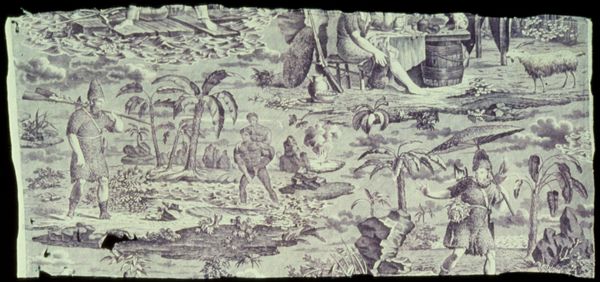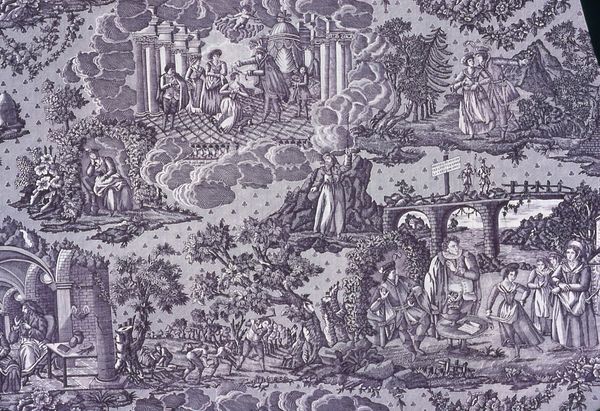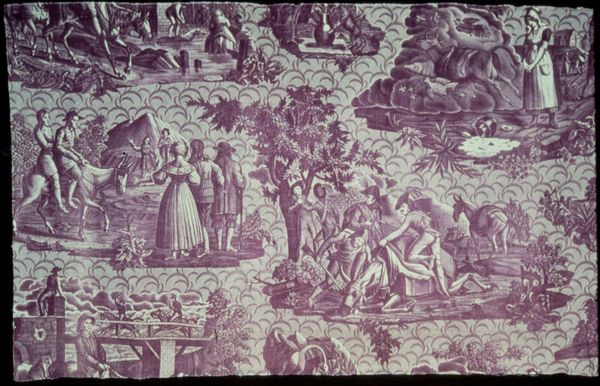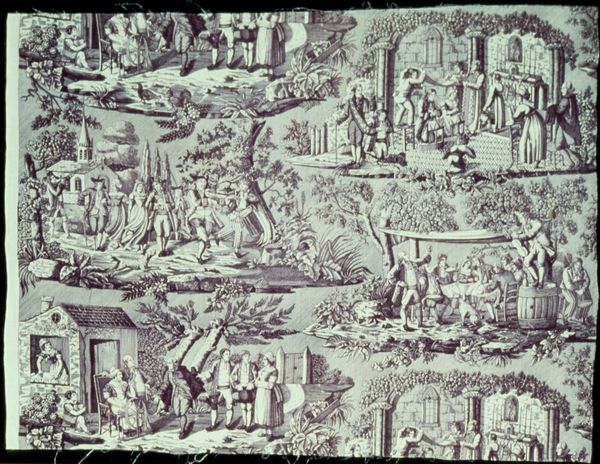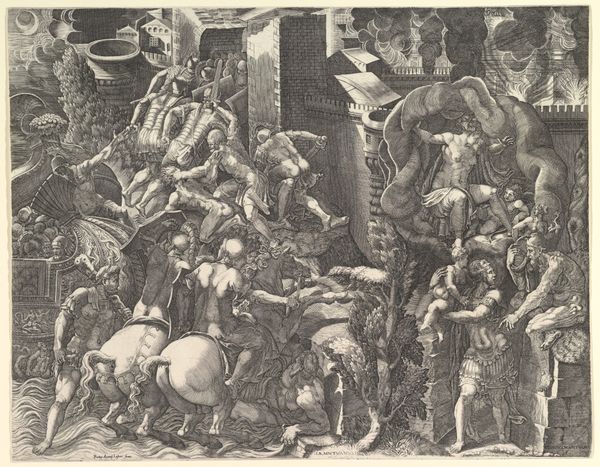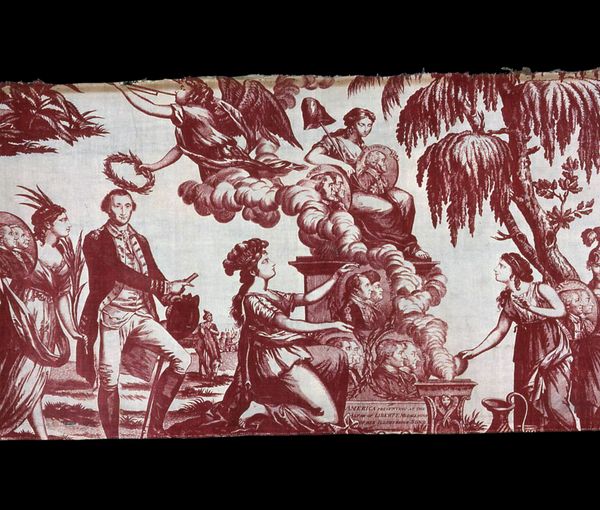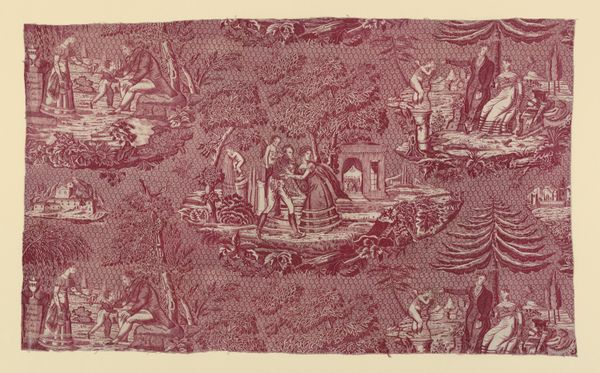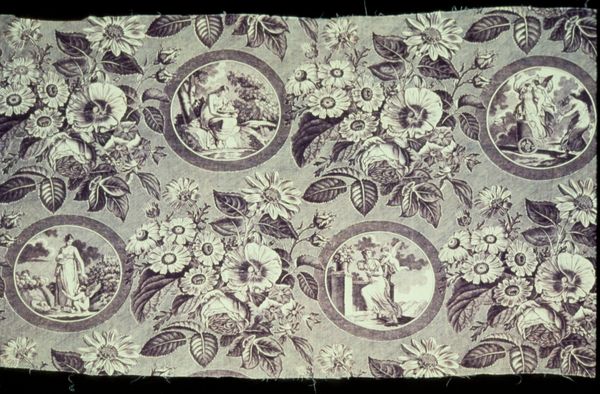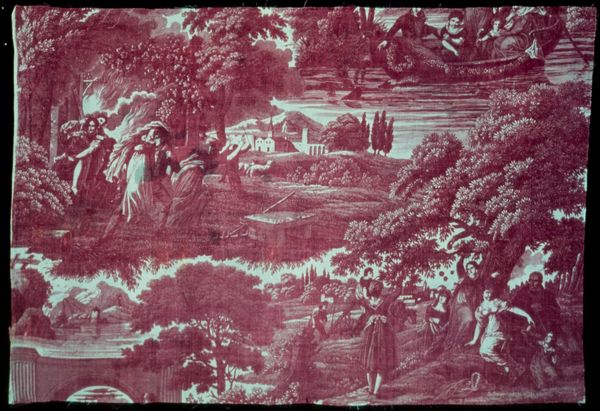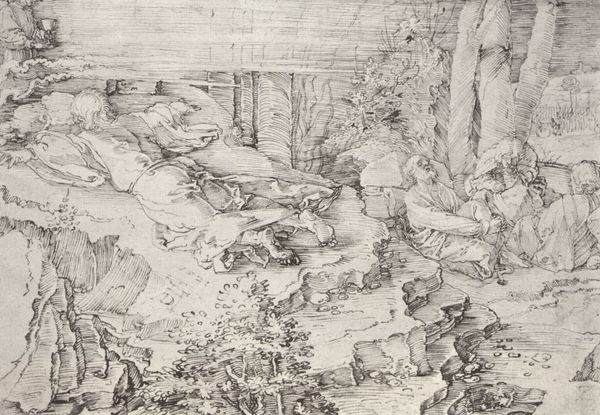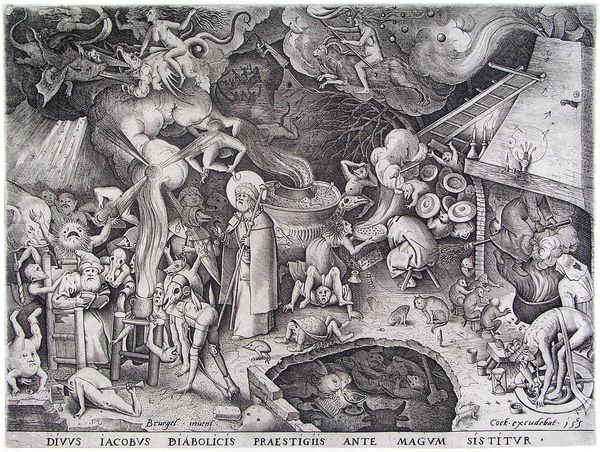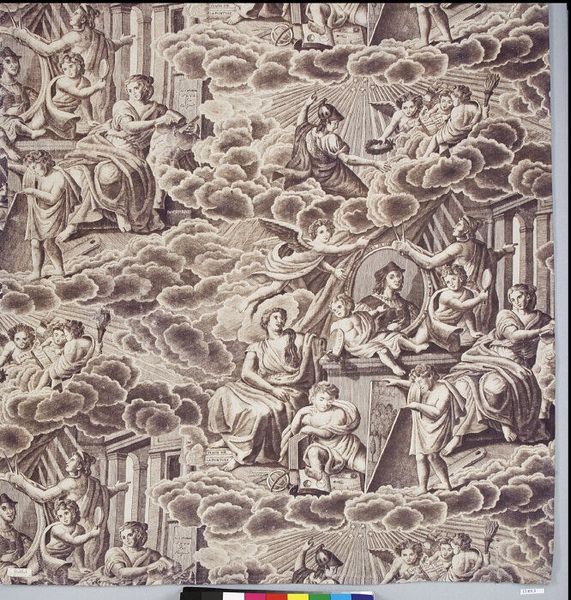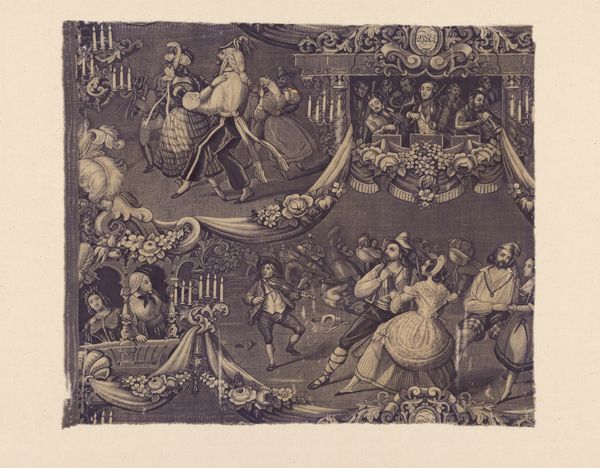
panel, print, textile, cotton
#
panel
#
narrative-art
# print
#
textile
#
romanticism
#
cotton
#
genre-painting
Dimensions: 23 1/8 x 30 1/4 in. (58.72 x 76.84 cm)
Copyright: Public Domain
Curator: This printed cotton panel, likely produced in the 19th century, offers a glimpse into a romanticized past. Editor: Immediately, I’m struck by the idyllic, almost theatrical quality. It’s like a stage set for some operatic love affair. The monotone printing creates this antique feeling, doesn’t it? Curator: Absolutely. Considering it’s a textile, this "Panel," the artist – an anonymous figure, unfortunately – presents complex narrative art. I mean, notice how these figures are situated within their leisure: musical instruments abound, people are serenading, strolling... the visual grammar evokes Romanticism so strongly. Editor: I notice the repeating figures and patterns... gondolas appear again and again; groups of lovers populate different segments of the fabric. Do you think that points towards cyclical ideas—the repeating nature of relationships and courtly love? Curator: Precisely! Romanticism favored cyclical concepts of time and human experience. Also, this era was heavily influenced by aristocratic sensibilities despite a period of significant sociopolitical transformation, reflected by genre painting: quiet, intimate scenes of bourgeois and aristocratic life. The very existence of cotton is linked to very problematic aspects of labor exploitation during the time. Editor: So we see encoded here ideas about beauty and pleasure that are tied to cultural and even political tensions. Speaking of which: what about the limited color? Is that merely due to the printmaking technology, or do you read that in symbolic terms? A toning down, perhaps, of passions or a limitation of freedom. Curator: I would argue that, aesthetically, that’s precisely where its strength lies. The artist uses limitation, even in production methods, to reveal a complex set of societal structures, all circulating around romance, privilege, and what gets left unsaid. It invites reflection about the ways in which visual language reinforces and critiques these very structures, in both past and present societies. Editor: What starts as a pastoral scene then invites conversations on historical power dynamics... there's such potent beauty in this interplay. Curator: Indeed; analyzing textiles from periods like these helps us to see them as threads intricately woven within complex webs of sociopolitical meaning, expanding the possibilities of our own self-reflection and transformation.
Comments
No comments
Be the first to comment and join the conversation on the ultimate creative platform.
